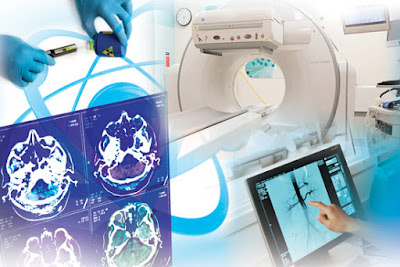Wessam Bou-Assaly began his medical career in France. He studied
medicine in this country and earned a medical degree in 2000. After graduating
from medical school, he chose to specialize in radiology and spent four years
completing a radiology residency at Caen and Lille in France. After he
completed his residency program, he decided to advance his education even
further. He applied to the Indiana University, School of Medicine in the United
States and was accepted into the Neuroradiology and Head and Neck Imaging
Fellowship Program. He completed this program in 2006 and became a fellow once
again at the University of Indiana, School of Medicine. He completed a Nuclear
Medicine and PET CT Fellowship in 2007.
In 2007, Wessam Bou-Assaly began working at the Ann Arbor VA
Hospital in Ann Arbor, Michigan. He also began working as an Assistant Professor
in the Department of Radiology at the University of Michigan in 2008. He built
a successful career for himself, and he began joining and participating in a
variety of professional organizations. He has also held several editorial
positions for monthly peer-reviewed journals. Bou-Assaly is a manuscript
reviewer for European Radiology,
which is a monthly peer reviewed journal that is published by the European
Society of Radiology. He is also a manuscript reviewer for Clinical Radiology and Clinical
Radiology, both of which are monthly peer reviewed journals that are
published by the Royal College of Radiology. As a manuscript reviewer, he reads
through papers that are submitted to the journals, and helps decided whether or
not they should be published.
Wessam Bou-Assaly is also an editorial board member for the World Journal of Radiology, which is an
open-access, monthly peer reviewed journal. He works with Advances in Computed Tomography in the same capacity. As an
editorial board member he reads manuscripts that were submitted by other
doctors and scientists. He studies their research and works with the other
board members to decide which papers will be published in the journal.
Wessam Bou-Assaly is heavily invested in academia. He spent six years as an Assistant
Professor at a University. He has written several papers for peer reviewed
journals as well. He has also given several poster presentations at scientific
meetings. These include, “CT Scan of the
Acute Abdomen” at the 13th Annual Meeting of Franco-Lebanese
Radiologists, and “Double the Dose or
Double the Benefit? Braking Down the Myths Behind Dual Energy CT” at the
2013 ASHNR Annual Meeting. Wessam Bou-Assaly is an experienced radiologist who
has worked in academia and research for years.











